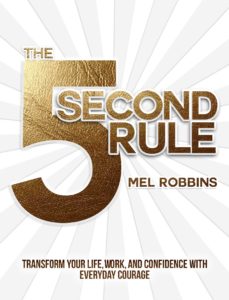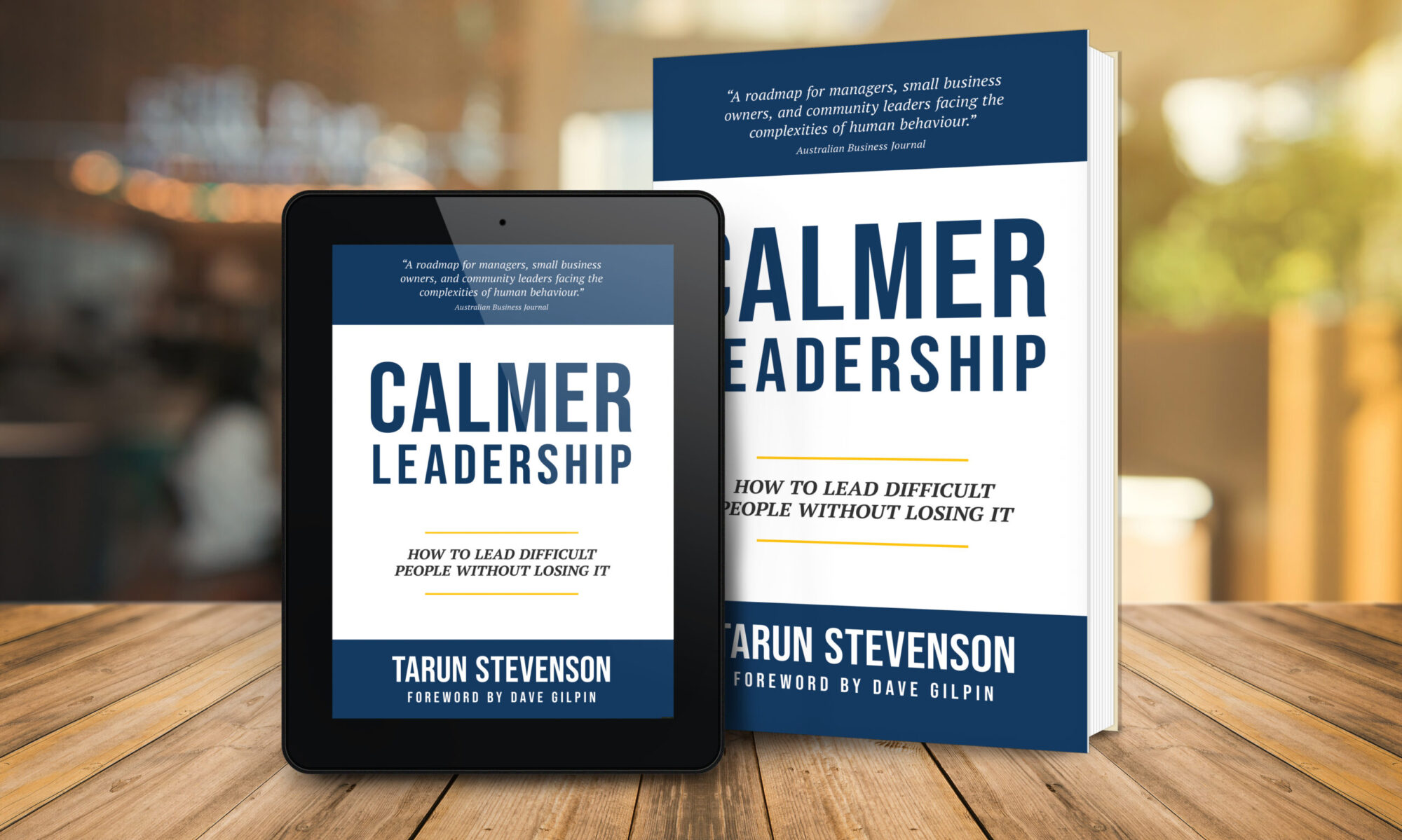The missing piece for mastering change and shifting from a life of dreams to reality.
My review and observations of Mel Robbins’ 5 Second Rule.
If you tune into my weekly FB Live Video “Leadership Digest”, you would have heard me mention a new book I’m reading “The 5 Second Rule” by Mel Robbins.
I don’t ordinarily review books on my blog but I have been so taken by the concepts in this book that I feel compelled to share it with you all. Regardless of whether you intend to get the book or not, take a moment to read through this article cause I know it will give you some tools that will really help you in your personal development journey.
Now I just want to be straight up; I have not been asked to give this review, I was not approached by her publisher and I am not being paid in any way for my review. This is 100% my personal experience and perspective based on how it has impacted me personally.
Why?
If you’ve spent anytime around the personal development industry either as a consumer and or a practitioner, I have no doubt that you would have come across 3 concepts that really underpin most of what the personal development industry offers. They are: Goals, Mindset, Action.
Basically the 3 fundamentals to growth in just about any area of your life will depend on your ability to set meaningful and effective Goals, to manage your mindset or attitude on your journey towards said goals and willingness to take action in breaking old habits and forming new ones that will move you towards your desired outcome.
I myself have blogged and taught along this line in most of the work that I do as a Leadership and growth coach.
But there’s a catch…
While I still do firmly believe in these fundamental concepts to shaping and designing your life, there has always been a piece that I have felt is missing in th this equation. A fact of coaching and life is: no matter how much a person wants to change there is always that challenge of overcoming the self sabotaging habits and thoughts that keep us stuck in in-action.
So often, despite our deep urge to want to change, we remain stuck in self defeating feedback loops of in-action; ultimately because we are creatures of habit. We form these habits to protect ourselves and with as much urgency that we apply to our desire for change we often have an equal and opposite force working against our desire to keep us stuck…
Coaches know this, because one of the questions you’ll find on almost all coaching agreements is: “What’s one thing that I can say or do to help you when you get stuck, that will help you move forward.”
Coaches know regardless of the amount of positive energy, motivation, encouragement, desire or knowledge they give to the client, there is always a point where the individual will get stuck and there is nothing you can say to get them through it… Ultimately as a coach you can lead a person to the point of change and arm them with all the tools and knowledge for change but unless they can find within themselves the will, motivation ability to take action, there is nothing you can do to make them change…
I saw this over and over again as a behaviour coach in high schools. Time and time again I worked with children who had a deep desire to change behaviours that were negatively impacting their life. They knew the importance of their need to change yet were unable to take action to make the change.
Regardless of the encouragement, support or consequence that was put in place, they would keep returning to the negative habits of dysfunctional behaviour. Even when they insisted they didn’t want to. Like the old proverb of the dog returning to it’s vomit, these students would keep coming back to their self-destructive behaviour patterns and there was nothing I or anyone else could do to change that. Ultimately they had to do it for themselves.
My one lament through all of this was; if only there was some way that I could help them by-pass their emotional instinctive part of their thinking that kept them locked in self sabotage and move them into their rational brain, long enough to take action and keep taking action until they started forming new habits for change…
Enter Mel Robbins…
 In “The 5 Second Rule” Mel Robbins offers a tool to do just that. Bridge the gap between desire and action by helping the individual bypass the emotional parts of our thinking that keep us stuck. She teaches a technique that helps us to do a brain re-set if you will, to short circuit negative feedback loops and take actions on the things that we instinctively know within ourselves that we need to change.
In “The 5 Second Rule” Mel Robbins offers a tool to do just that. Bridge the gap between desire and action by helping the individual bypass the emotional parts of our thinking that keep us stuck. She teaches a technique that helps us to do a brain re-set if you will, to short circuit negative feedback loops and take actions on the things that we instinctively know within ourselves that we need to change.
Put simply, Mel Robbins suggests that when we find ourselves stuck in those moments when we know we need to choose a different path of action but feel overwhelmed to stay stuck, we can actually by-pass this process by simply counting backwards from 5. 5, 4 , 3, 2, 1… Sound ridiculous..? Yep, I thought so too… but here’s the kicker; it works!
When I heard about the rule, I decided to try it out to see if it would work. And to my surprise it did… It in effect it acts like a brian reset, forcing your brain to turn off that emotional instinctive part of our brain (that keeps us stuck in in-action) and shift it’s operations to the prefrontal cortex (the part of our brain that deals with logical thought). This simple act gives you a tiny window of clear rational thought to take affirmative action for change, before the emotion and fear come back to paralyse you again…
While Mel Robbins discovered this purely by accident when she was trying to overcome her own patterns of self-destructive behaviour (her personal story in the book is very engaging and authentic), in “The 5 Second Rule” she also goes into great details around the science of how this actually works. There’s actually a stack of science to back this up!
Here’s Mel to explain it:
It’s no magic pill…
As I said I have started putting into practice in my own life and seen it start to have a powerful effect on all sorts of areas from negative thoughts about another person to managing poor eating habits… I’ve even tried to teach it to my children and my oldest boy (14) who has started using it to help him focus in school is seeing results.
But it’s no magic pill. You won’t find just by doing it once it magically fix all of your self defeating habits… It needs to be used regularly to help you form new habits and thinking patterns. As Robbins say; it’s a tool that you can pull out every time you find yourself stuck. What it does is gives you an window of opportunity to take action. You still have to take the action! You may need to use it 100 times a day to take lots of small steps in positive action before you start seeing big results. But the exciting thing is: now you can.
While before fighting thoughts of self doubt, fear, self loathing may have meant trying to fight a battle in your mind that always ended in defeat, now you have a tool that gives the rational you the edge. The part of you that knows your need for change and is actually willing to take the action.
You have to use it…
Much like the previous paragraph, for it to work you have to actually try it out and get consistant with using it. I tried to help my 7 y.o. use it the other day when he was having a moment and he stubbornly said to me no, “I will never do that..!” The reality is, you can read the book, watch the video and even think it’s a great concept, but unless you put it into practice you won’t see any benefit from it.
So is the book any good?
Mel Robbins publishers are comparing this book to some of the classics like; Think & Grow Rich by Nepolean Hill and Good to Great by Jim Collins… is it that good? Maybe. Only time will tell, but from my perspective I don’t think they are over reaching in their comparison. Robbins work is really ground breaking. It is a breath of fresh air in an industry where it seems like everyone is rehashing the same old concepts in a new package.
Robbins actually offers a significant click forward for personal development and provides what I believe to be a missing piece in the puzzle of helping individuals grow and reach their full potential.
Her writing is conversational and easily accessible to the casual reader but certainly not overly simplistic and vapid. Robbins uses her own personal story to engage the reader and frame otherwise complex psychological concepts in a way that any reader can understand.
For my money this is the book to read for 2017. Both personally and professionally I know this will have a huge impact on my life and that of the people I coach. If you’re looking for the missing piece to moving your personal development journey forward, then I recommend you take a few days to read “The 5 Second Rule” then actually try putting into practice. You won’t regret it, and even if you do, just count down from 5 and move on… You’ve got nothing to lose.
If you would like to learn more about effectively growing in your leadership, why not check out our FREE Goal setting guide. See below for details.
https://leadcommunicategrow.com/free-goal-setting-guide/
5 Steps to Set Goals that Work

